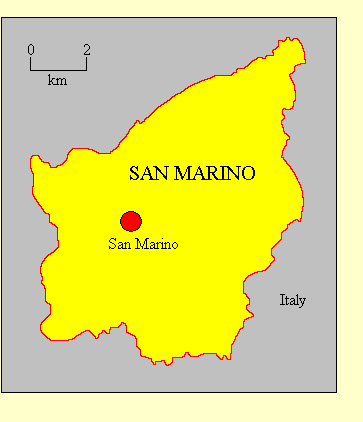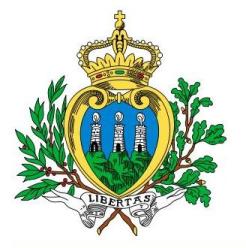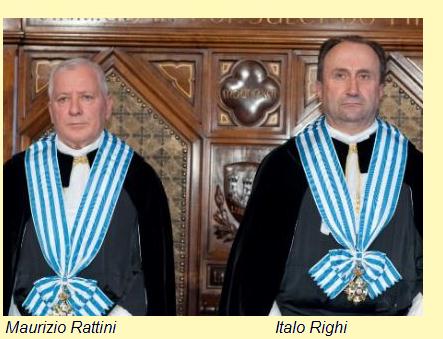

MOST SERENE REPUBLIC
OF SAN MARINO
• Official name: Serenissima Repubblica di San Marino (Most Serene Republic of San Marino)
• Location: Western Europe
• International organisations: Council of Europe, Organisation for Security and Co-operation
in Europe, United Nations
• Borders: Italy
• Coastline: None
• Land area: 61 Km2
• Population: 31,000
• Annual GDP (PPP) per capita: US$41,900 (2009 CIA estimate). World ranking: 12
• Ethnicity: Italian
• Languages: Italian is the official language and the language of the population.
• Religion: Most Sammarinese are Catholic Christians.
• Form of government: Presidential democratic republic
• Capital: San Marino
• Constitution: San Marino does not have a formal constitution. The Statutes of 1600, amended
many times since, serve the functions of a constitution.
• Heads of state: The Captains-Regent, two joint heads of state, chosen by the legislature
from among its own members, and always belonging to different parties, for
six-month terms. Maurizio Rattini
and Italo Righi took office on
1 April 2011.
• Head of government: San Marino does not have a Prime Minister, but the Secretary of State for
Foreign and Political Affairs, chosen by the legislature but not a member of it, and not a
party member, carries out some prime ministerial functions.
• Legislature: San Marino has a unicameral legislature, the
Grand and General Council (Consiglio Grande e
Generale), which has 60 members elected by direct universal suffrage for five-year terms.
• Electoral authority: None known
• Freedom House 2009 rating: Political Rights 1, Civil Liberties 1
• Transparency International Corruption Index: no rating
• Reporters Without Borders Press Freedom 2010 Index: no rating
• Heritage Foundation Economic Freedom 2010 Index: no rating

Political history
San Marino has been an independent state since the early Middle Ages - it was traditionally
founded in 301 AD by Marinus, a Roman Christian, as a refuge from persecution. Its independence
was recognised by the Pope in 1291 and its form of government dates from the 16th century.
The
Grand and General Council was controlled by the nobility until 1906, when a bloodless revolution
expanded the franchise to all heads of families, and in 1920 universal franchise followed. In
1922, however, Mussolini's Italian fascist regime helped local fascists take power, which
they retained until 1943. The Communists and Socialists then took power and retained it until
1957. Since then the local Christian Democrats and Socialists have alternated in control of the
legislature.
Sammarinese politics are dominated by the
Sammarinese Christian-Democratic Party,
a moderate conservative party, the social-democratic
Sammarinese Socialist Party and
the liberal Party of Democrats. As in Italy, the
Sammarinese Communist Refoundation maintains a dwindling Communist tradition. At the 2006 elections,
the Christian Democrats and the coalition of Socialists and Democrats won almost equal numbers of
seats. The resultant deadlock led to fresh elections in 2008, which the Christian-Democrats and their
allies won.
Updated May 2012
|

